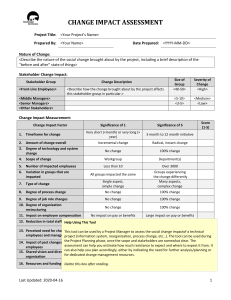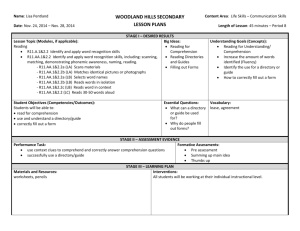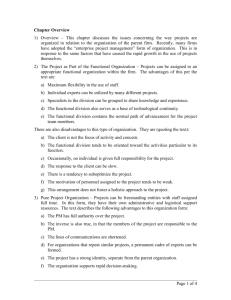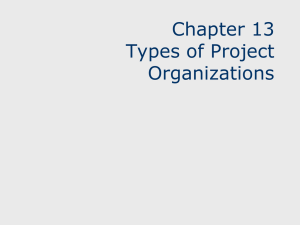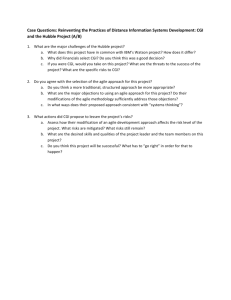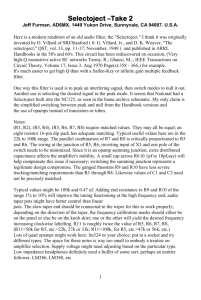Presentation PPT
advertisement
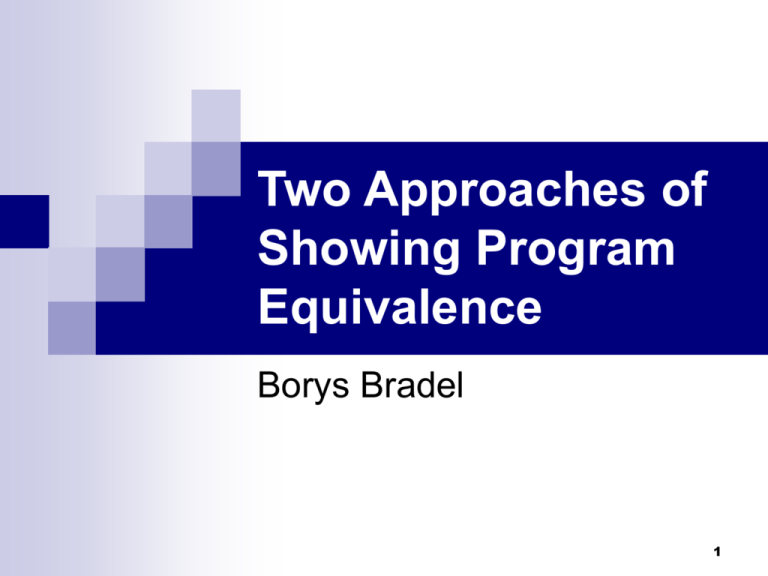
Two Approaches of
Showing Program
Equivalence
Borys Bradel
1
Introduction
Two programs are equivalent if they produce the
same effect
Try for all possible inputs
Too
many possibilities
Security
Direct proof
Compute necessary conditions
Use a theorem prover
2
Motivation - Verification
Non-optimizing compilers
Optimizing compilers
Local
optimizations
Global optimizations are not verifiable
Still want to verify
Compare
to non-optimized
3
Outline
Background
Hoare
ACL2
Calculus
Methodology
Program Representation
Precondition Computation
Related Work
Conclusion
4
Hoare Calculus
{P} v:=u {Q} = P Q[v/u]
{P} C1 ; C2 {Q} = {P} C1 {R}, {R} C2 {Q}
{P} if B then C1 else C2 {Q} =
{P and B} C1 {Q}, {P and not B} C2 {Q}
wlp(u:=v,Q) = Q[v/u]
wlp(C1 ; C2, Q) = wlp (C1, wlp(C2, Q))
wlp(if B then C1 else C2, Q) =
(B and wlp (C1, Q)) or (not B and wlp (C2, Q))
y:=2+3 ; x:=5+y {x=10}
y:=2+3 {10=5+y}
{10=5+(2+3)}
5
ACL2
Proofs on recursively defined functions
Subset of Common Lisp
Information is stored in books
(defun our-add (x y) (+ x y))
(defthm our-add-is-commutative
(equal (our-add a b) (our-add b a)))
6
Program Representation
Return: r1
Instructions:
'((add r1 4 3)
(add r3 r1 5)
(ble r1 r3
((add r2 5 4)
(add r5 6 5))
((add r2 6 2)
(add r6 6 3)))
(add r4 r1 r2)))
R1:=4+3
R3:=R1+5
if R1 ≤ R3
F
T
R2:=5+4
R5:=6+5
R2:=6+2
R6:=6+3
R4:=R1+R2
return R1
7
Program Representation
R1:=4+3
R3:=R1+5
if R1 ≤ R3
F
T
R2:=5+4
R5:=6+5
R2:=6+2
R6:=6+3
R4:=R1+R2
return R1
The
program is executable:
(func1 0) 7
Equivalence is provable:
(defthm program-equivalence
(equal (func1 A) (func2 A)))
func1(A)
R1:=4+3
R3:=R1+5
(R2 R1):=func1-branch-2(R3,R1)
R4:=R1+R2
return R1
func1-branch-2(R3,R1)
if R1 ≤ R3 then
R2:=5+4
R5:=6+5
else
R2:=6+2
R6:=6+3
end if
return (R2 R1)
8
Precondition Computation
R1:=4+3
R3:=R1+5
if R1 ≤ R3
R11:=4+3
R13:=R11+5
if R11 ≤ R13
F
T
R2:=5+4
R5:=6+5
R2:=6+2
R6:=6+3
R4:=R1+R2
return R1
F
T
R12:=5+4
R15:=6+5
R12:=6+2
R16:=6+3
R14:=R11+R12
return R11
9
Precondition Computation
R1:=4+3
R3:=R1+5
if R1 ≤ R3
R11:=4+3
R13:=R11+5
if R11 ≤ R13
R1=R11
T,T
R2:=5+4
R5:=6+5
F,F
R12:=5+4
R15:=6+5
R2:=6+2
R6:=6+3
R1=R11
(R1=R11 R1≤R3 R11≤R13)
(R1=R11 R1>R3 R11>R13)
R12:=6+2
R16:=6+3
R1=R11
R4:=R1+R2
return R1
R14:=R11+R12
return R11
R1=R11
10
Precondition Computation
Precondition for branches:
Precondition for: R3:=R1+5, R13:=R11+5
(R1=R11 R1≤R3 R11≤R13) (R1=R11 R1>R3
R11>R13)
(R1=R11 R1≤(R1+5) R11≤(R11+5)) (R1=R11 R1>(R1+5)
R11>(R11+5))
Precondition for R1:=4+3, R11:=4+3
((3+4)=(3+4) (3+4)≤((3+4)+5) (3+4)≤((3+4)+5))
((3+4)=(3+4) (3+4)>((3+4)+5) (3+4)>((3+4)+5))
(TTT)(TFF) = T
11
Related Work
Robert van Engelen, David Whalley, and
Xin Yuan. "Automatic Validation of CodeImproving Transformations"
George C. Necula, “Translation Validation
for an Optimizing Compiler”
Many more, although less so.
12
Conclusion
A theorem prover is useful for validation
No
need to code the entire logic engine
Difficult to incorporate
Validation is slow
Algorithms
must be selected carefully
13
Future Work
Add loop, method, and memory handling
Cannot
Add simplification of constraints
Right
analyze real programs
now constraints grow too quickly
Automate
Must
identify why the proof did not complete
May require new theorems, better use of
books
14
